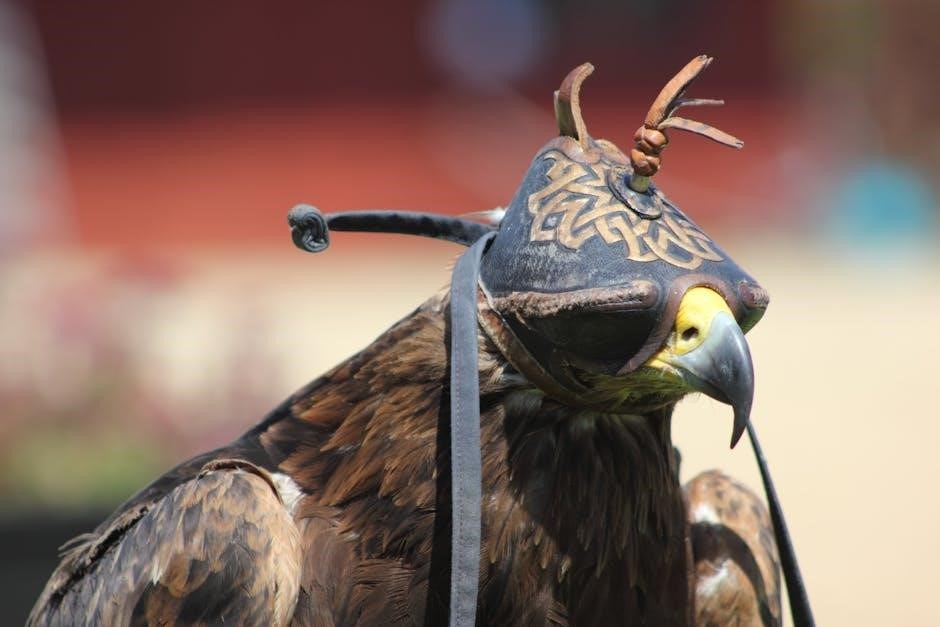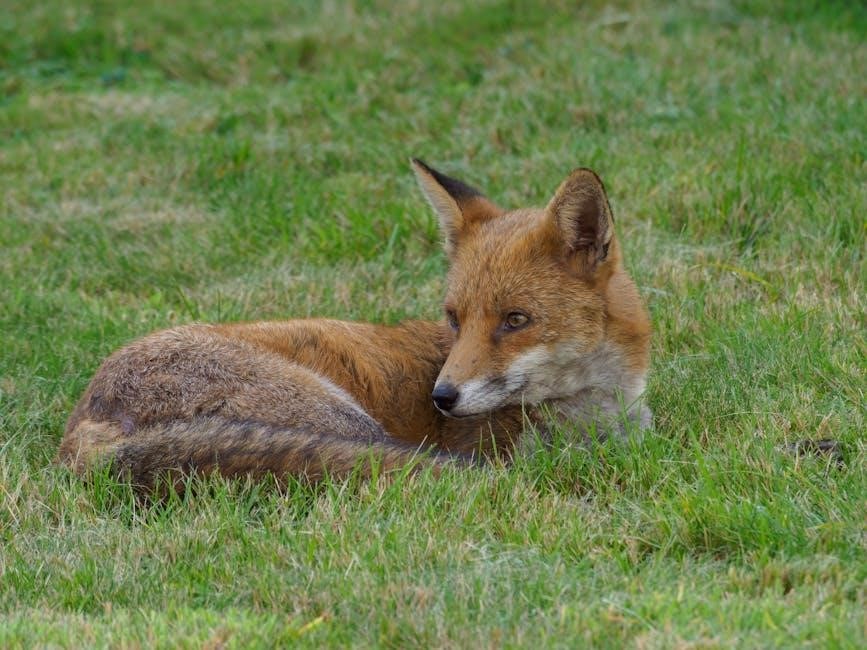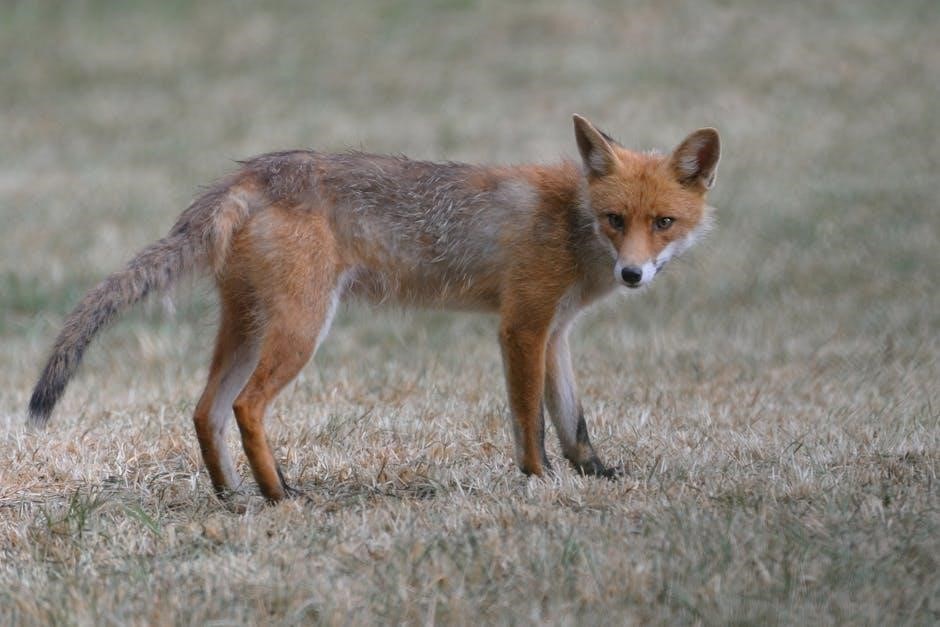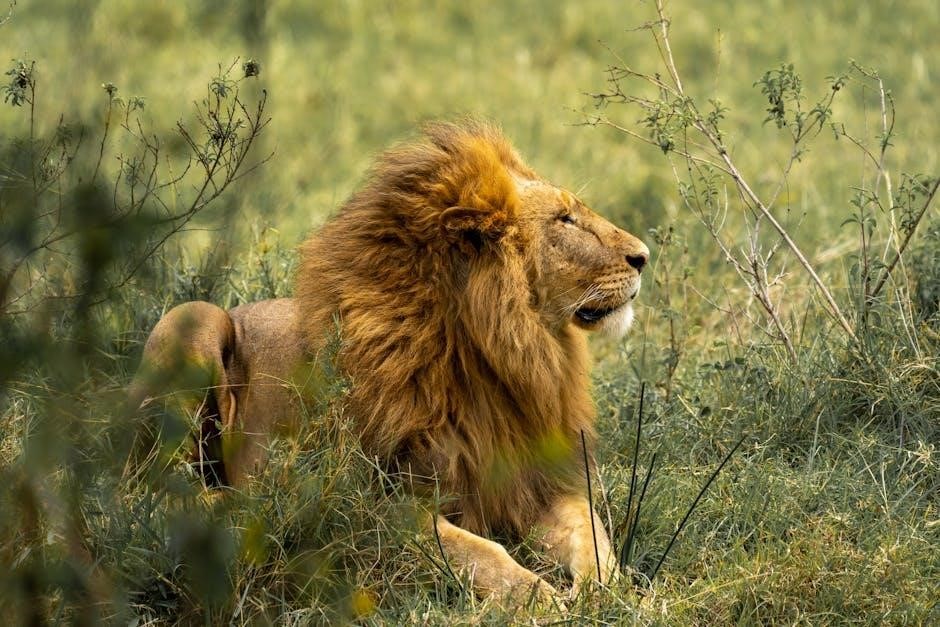Outdoor Scavenger Hunt PDF: A Comprehensive Guide
Unleash outdoor adventures with our comprehensive guide to creating and using outdoor scavenger hunt PDFs! We provide the resources to design engaging experiences that will bring fun, learning, and exploration to children.

Outdoor scavenger hunts are exciting activities that blend exploration, problem-solving, and fun in the great outdoors. These hunts involve searching for specific items or completing tasks in a natural environment, guided by a list or clues. Scavenger hunts are adaptable for various ages and settings, from backyards to parks and forests.
The goal is to find listed items like leaves, rocks, or specific colors, turning a simple walk into an interactive adventure. These hunts encourage observation, teamwork, and a deeper appreciation for nature. With customizable themes and challenges, outdoor scavenger hunts offer endless possibilities for entertainment and education. They create lasting memories while connecting participants with the natural world.
Benefits of Outdoor Scavenger Hunts for Kids
Outdoor scavenger hunts offer numerous benefits for kids, blending fun with valuable learning experiences. These hunts encourage outdoor exploration, promoting physical activity and a love for nature. Kids develop keen observation skills as they search for specific items, enhancing their attention to detail and awareness of their surroundings.
Problem-solving abilities are also sharpened as children interpret clues and navigate their environment. Scavenger hunts foster teamwork and cooperation when done in groups, teaching kids to work together towards a common goal. These activities boost creativity, critical thinking, and provide memorable experiences that connect children with the natural world. Ultimately, outdoor scavenger hunts make learning enjoyable.
Encouraging Outdoor Exploration
Outdoor scavenger hunts are a fantastic way to encourage kids to explore the world around them. By providing a structured yet exciting activity, these hunts transform a simple walk in the park or backyard into an engaging adventure. The thrill of the hunt motivates children to venture beyond their usual boundaries, discovering new plants, insects, and natural features they might otherwise overlook.
This exploration fosters a sense of curiosity and wonder, inspiring kids to learn more about their environment. It also combats the sedentary lifestyle often associated with modern childhood, promoting physical activity and a deeper connection with nature. Outdoor scavenger hunts turn the outdoors into a fun, interactive learning space.
Promoting Observation Skills
Scavenger hunts are excellent tools for honing observation skills in children. To successfully complete a hunt, kids must pay close attention to their surroundings, noticing details they might normally miss. They learn to differentiate between various types of leaves, identify different bird calls, and spot subtle changes in the landscape.
The act of searching for specific items encourages a focused and deliberate approach to observation. Children develop the ability to analyze visual information, compare and contrast objects, and remember key details; These sharpened observation skills translate into improved attention spans and a greater appreciation for the intricacies of the natural world. It’s a fun, educational way to engage with the environment!
Enhancing Problem-Solving Abilities
Outdoor scavenger hunts inherently foster problem-solving abilities in children. As they navigate the hunt, they encounter obstacles and challenges that require critical thinking and creative solutions. Whether deciphering a riddle, interpreting a picture clue, or determining the best route to find a hidden item, children are constantly engaging in problem-solving.
These hunts encourage them to think strategically, analyze clues, and develop plans to overcome challenges. Successfully completing a scavenger hunt provides a sense of accomplishment and reinforces the value of perseverance and problem-solving skills. This playful approach to learning helps children develop confidence in their ability to tackle problems in various contexts. They learn how to think outside the box!
Fostering Teamwork and Cooperation
Outdoor scavenger hunts naturally promote teamwork and cooperation, especially when conducted in groups. Participants learn to collaborate, share ideas, and support each other to achieve a common goal: completing the hunt. They must communicate effectively, delegate tasks, and coordinate their efforts to decipher clues and locate items.
Through teamwork, children learn to appreciate diverse perspectives and leverage each other’s strengths. Scavenger hunts provide a fun and engaging environment for developing essential social skills such as negotiation, compromise, and conflict resolution. This experience fosters a sense of camaraderie and shared accomplishment, teaching children the value of working together towards a shared objective. The collaboration will bring better results and more fun.

Creating Your Own Outdoor Scavenger Hunt PDF
Craft personalized outdoor scavenger hunt PDFs! Tailor themes, items, clues, and designs to create unique adventures for kids, enhancing fun and engagement in nature.
Choosing a Theme for Your Scavenger Hunt
Selecting a theme for your outdoor scavenger hunt is the first step in creating an engaging and memorable experience. Themes provide a central focus, guiding the selection of items, clues, and overall design of your PDF. Consider age appropriateness; younger children might enjoy themes like “Backyard Bugs” or “Color Quest,” while older kids may prefer “Nature Photography” or “Survival Skills.”
Align the theme with the environment where the hunt will take place, such as a park, forest, or beach. Researching existing themes, like those found in printable resources, can spark creativity. The theme should also reflect the interests of the participants, ensuring enthusiasm and motivation.
Developing a List of Items to Find
Crafting a compelling list of items is essential for a successful outdoor scavenger hunt. Base the list on your chosen theme and the location of the hunt, ensuring items are accessible and safe to collect or observe. Consider incorporating a mix of easy-to-find and slightly challenging items to keep participants engaged.

Organize the list into categories like “Nature-Based Items,” “Color-Based Items,” or “Shape-Based Items” to add structure and variety. Encourage observation by including specific details, such as “a leaf with five points” or “a rock with smooth edges.” Vary the list based on age and ensure all items are easily identifiable.
Nature-Based Items
Incorporating nature-based items into your scavenger hunt list encourages exploration and appreciation of the natural world. These items can range from common finds like leaves, twigs, and rocks to more unique discoveries such as feathers, wildflowers, or specific types of insects.
When selecting nature-based items, consider the local environment and season. Tailor the list to include items that are readily available and pose no harm to the ecosystem. Encourage participants to observe the items closely, noting their colors, textures, and shapes. Always emphasize the importance of leaving nature undisturbed, collecting only fallen items when appropriate.
Color-Based Items
Adding color-based items to your scavenger hunt introduces an element of visual discovery and sensory engagement. Participants must identify objects matching specific colors, sharpening their observation skills and expanding their awareness of their surroundings.
Include a diverse palette of colors in your list, such as red, blue, green, yellow, and orange, and challenge participants to find natural or man-made objects that correspond to each hue. This can include flowers, leaves, stones, or even pieces of litter (collected responsibly). Encourage creativity by allowing for variations in shade and intensity.
Shape-Based Items
Incorporating shape-based items introduces a geometric dimension to your outdoor scavenger hunt, encouraging participants to observe the environment with a keen eye for form and structure. This challenges participants to identify objects that match specified shapes found naturally or constructed by humans.
Include a variety of shapes in your scavenger hunt list, such as circles, squares, triangles, and rectangles. Participants can search for objects like round stones, square paving stones, triangular leaves, or rectangular signs. This activity fosters spatial reasoning and strengthens the connection between abstract concepts and tangible objects in the real world.
Crafting Clues and Riddles (Optional)
Elevate your outdoor scavenger hunt by incorporating clues and riddles! This engaging option transforms the activity into a stimulating mental challenge, requiring participants to solve puzzles to discover the next item or location. Clues and riddles add an element of mystery and excitement, making the hunt more memorable and interactive.
When crafting clues, consider the age and skill level of the participants. Use rhymes, wordplay, or picture clues to make the riddles both fun and accessible. Ensure the clues are clear enough to guide participants without being too easy, striking a balance that promotes critical thinking and problem-solving skills.
Using Rhymes and Wordplay
Inject creativity into your outdoor scavenger hunt by using rhymes and wordplay in your clues! Rhyming clues add a playful and memorable element, engaging participants with their rhythmic nature. Wordplay, such as puns or anagrams, challenges players to think creatively and decode the hidden meaning.
When crafting rhyming clues, ensure the rhymes are clear and directly related to the item or location. For example, “Find something tall, that shades us all,” could lead to a tree. Wordplay clues can be more complex, requiring participants to rearrange letters or interpret double meanings. Tailor the complexity to the age and abilities of the players, making the hunt both challenging and enjoyable.
Creating Picture Clues
Enhance your outdoor scavenger hunt with engaging picture clues, perfect for younger children or non-readers! Picture clues offer a visual representation of the items to find, making the hunt accessible and exciting for all participants. Use clear and recognizable images that are easy to identify in the outdoor environment.
You can use photographs of specific objects or draw simple illustrations. Consider taking pictures of the exact locations or items within your scavenger hunt area to add a layer of realism. For older children, you can introduce more abstract picture clues that require interpretation and problem-solving. For instance, a close-up of tree bark could lead to a specific tree. Picture clues add a fun, visual element to your hunt!
Designing Your Scavenger Hunt PDF
Crafting an engaging scavenger hunt PDF involves thoughtful design to ensure clarity, visual appeal, and ease of use. Begin by selecting a layout that accommodates your clues and visuals without feeling cluttered. Consider using a template to streamline the process and maintain a consistent design throughout your document.
Incorporate graphics and images related to your chosen theme to enhance the visual experience. Use clear, readable fonts and sufficient spacing to prevent eye strain. Organize your clues in a logical order, ensuring a smooth flow for participants. Including a checklist or boxes for marking found items. Finally, save your design as a PDF for easy sharing and printing.
Using Templates and Software
Leveraging templates and software can significantly simplify the design process of your outdoor scavenger hunt PDF. Numerous online platforms offer pre-designed templates specifically tailored for scavenger hunts, providing a variety of layouts and themes to choose from. These templates often include customizable elements, allowing you to easily add your own text, images, and clues.
Software like Canva, Adobe InDesign, or even Microsoft Word can be used to create visually appealing PDFs. Canva offers user-friendly drag-and-drop features and a vast library of graphics. Adobe InDesign provides more advanced design capabilities for professional-looking documents. Utilizing these tools ensures a polished and engaging final product.
Incorporating Visuals and Graphics
Enhance the appeal and engagement of your outdoor scavenger hunt PDF by strategically incorporating visuals and graphics. High-quality images related to the items on your list can be particularly helpful for younger children who may not yet be strong readers. For nature-based hunts, include pictures of leaves, trees, or animals that participants need to find.
Use clear and vibrant graphics to highlight clues or add a playful touch to the design. Consider adding a visually appealing border or background to each page to create a cohesive and attractive look. Icons can also be used to represent different categories of items or to indicate the difficulty level of each clue. Ensure that all visuals are age-appropriate and contribute to the overall theme of the scavenger hunt.

Free Printable Outdoor Scavenger Hunt PDF Resources
Discover a wealth of free printable outdoor scavenger hunt PDFs to spark adventure. Explore nature, backyard, and camping themes, all designed for family fun and learning!

Where to Find Free Printable Scavenger Hunts
Embark on a quest for free, printable outdoor scavenger hunts across the web! Numerous websites offer downloadable PDFs perfect for entertaining kids of all ages. Look to educational blogs and parenting websites, which frequently provide nature-themed scavenger hunts to encourage outdoor exploration. Many offer customizable options, allowing you to tailor the hunt to your specific environment, be it a backyard, park, or campsite.
Consider sites specializing in printable activities and games, as they often feature a wide array of scavenger hunts suited for various age groups and interests. Ensure the resources are reliable and age-appropriate before downloading.
Types of Printable Scavenger Hunts Available
Discover the vast array of printable scavenger hunts ready for outdoor adventures! Nature scavenger hunts are a popular choice, encouraging kids to identify plants, animals, and natural elements. Backyard scavenger hunts offer fun closer to home, focusing on common objects and features within the yard.
Camping scavenger hunts add excitement to outdoor excursions, prompting kids to find specific items related to camping life. There are also color-based hunts, shape-based hunts, and even hunts with riddles. The options are endless, and you can customize them to fit any environment or theme. Select the scavenger hunt that best matches your needs!
Nature Scavenger Hunts

Immerse children in the wonders of the natural world with nature scavenger hunts! These hunts encourage observation and identification of various elements found in nature. A typical nature scavenger hunt list might include items like a specific type of leaf, a feather, a smooth stone, or a particular flower.
They can be adapted for different environments, such as forests, parks, or even beaches. Nature scavenger hunts promote environmental awareness and foster a deeper appreciation for the beauty around us. Free printable versions are readily available, making them a convenient and educational activity for families and groups.
Backyard Scavenger Hunts
Transform your backyard into an exciting adventure zone with backyard scavenger hunts! Perfect for kids of all ages, these hunts are a fantastic way to encourage outdoor play and exploration right at home. A backyard scavenger hunt list can include common items like a red flower, a garden tool, a smooth rock, or a specific type of bug.
These hunts are easy to set up and require minimal preparation, making them ideal for spontaneous fun. Free printable templates are available online, offering a convenient way to customize the experience. Get ready to discover hidden treasures and create lasting memories in your own backyard!
Camping Scavenger Hunts
Enhance your next camping trip with the adventure of camping scavenger hunts! Ideal for families and groups, these hunts add an extra layer of excitement to the great outdoors. A camping scavenger hunt list can include items found in nature, like a pinecone, a feather, a specific type of leaf, or animal tracks.
Free printable templates are available online, making it easy to customize the hunt for your specific location and the ages of the participants. These hunts encourage exploration, observation, and teamwork, making them a memorable part of any camping experience. Get ready to explore and discover the wonders of nature!
Customizing Printable Scavenger Hunts
Tailor your scavenger hunt to perfectly suit your location, participants, and desired learning outcomes! Start by modifying existing free printable scavenger hunt PDFs to match the specific environment, whether it’s a backyard, park, or campsite. Adjust the list of items to find, incorporating local flora, fauna, or landmarks.
For younger children, use picture clues and simpler items, while older kids can tackle more challenging riddles and tasks. Add a personal touch by including inside jokes or references that resonate with your group. By customizing, you ensure a unique and engaging experience.

Tips for a Successful Outdoor Scavenger Hunt
Plan for safety, ensure age-appropriateness, and offer enticing incentives. A well-organized hunt promotes fun, exploration, and memorable experiences for all participants involved.
Safety Considerations
Prioritize safety by clearly defining the scavenger hunt area and establishing boundaries. Communicate these boundaries to all participants before starting the activity. Ensure adult supervision, especially for younger children, to monitor their progress and provide assistance as needed.
Inform participants about potential hazards, such as uneven terrain, poisonous plants, or insects. Advise them to wear appropriate clothing and footwear to minimize risks. Encourage the use of sunscreen and insect repellent to protect against sun exposure and bug bites.
Carry a first-aid kit for minor injuries. Establish a check-in system to ensure everyone returns safely. A pre-hunt safety briefing is crucial.
Age Appropriateness
Tailor the scavenger hunt’s difficulty to the age group participating. For younger children, create simpler lists with easily identifiable items; Use visual cues and picture clues to aid their understanding and engagement. Keep the hunt area smaller and more manageable to prevent frustration.
Older children can handle more complex clues, riddles, and a wider search area. Incorporate tasks that require problem-solving and critical thinking. Consider including items that are specific to their interests and knowledge base.
Adjusting the scavenger hunt to match the participants’ abilities ensures an enjoyable and successful experience for everyone involved. Modify the scavenger hunt to fit the scene.
Providing Incentives and Rewards
Motivate participants by offering incentives and rewards upon completion of the scavenger hunt. The promise of a prize can boost enthusiasm and encourage active participation, making the activity more engaging and memorable. Rewards don’t always have to be tangible; they can be experiences, privileges, or simply praise and recognition.

Consider offering small treats, stickers, or small toys as rewards. For older children, you might opt for a group reward, such as a pizza party or extra screen time. Tailor the reward to the age and interests of the participants.
The reward system should be clear and communicated before the scavenger hunt begins. This creates anticipation and helps to maintain focus throughout the activity.

